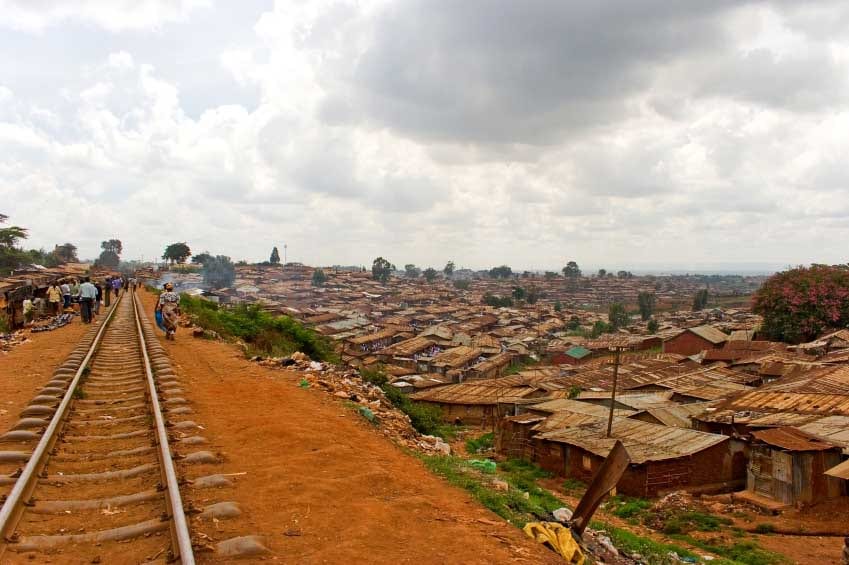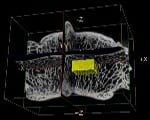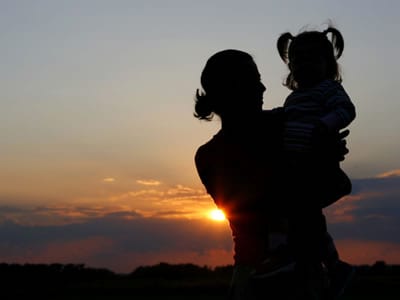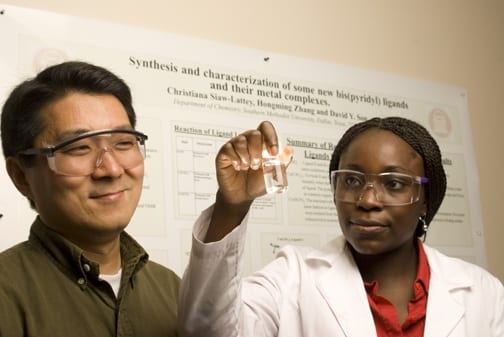 SMU geologist James E. Quick led a team of geologists that discovered a rare fossil supervolcano in the Sesia Valley of the Italian Alps.
SMU geologist James E. Quick led a team of geologists that discovered a rare fossil supervolcano in the Sesia Valley of the Italian Alps.
Now news journalists from internet, radio, television and newspaper outlets are interviewing Quick and his team, which was back at the site this September for further research. The team made the discovery two years ago and announced it in July. The discovery will advance scientific understanding of active supervolcanoes, like Yellowstone, which is the second-largest supervolcano in the world and which last erupted 630,000 years ago.
Sesia Valley’s unprecedented exposure of magmatic plumbing provides a model for interpreting geophysical profiles and magmatic processes beneath active calderas. The exposure also serves as direct confirmation of the cause-and-effect link between molten rock moving through the Earth’s crust and explosive volcanism.
 Quick is a professor in the SMU Roy M. Huffington Department of Earth Sciences as well as SMU associate vice president for research and dean of graduate studies.
Quick is a professor in the SMU Roy M. Huffington Department of Earth Sciences as well as SMU associate vice president for research and dean of graduate studies.
Co-authors of the report are Silvano Sinigoi, Gabriella Peressini and Gabriella Demarchi, all of the Universita di Trieste; John L. Wooden, Stanford University; and Andrea Sbisa, Universita di Trieste.
Excerpt from the Oct. 1, 2009 National Geographic News article “‘Supervolcano’ with twisted innards found in Italy”:
By Ker Than
Long before Vesuvius blew its top and smothered Pompeii, Italy was rocked by a “supervolcano” eruption so powerful it possibly blocked out the sun and triggered prolonged global cooling, scientists say.
The now fossilized supervolcano last erupted about 280 million years ago, leaving behind an 8-mile-wide (13-kilometer-wide) caldera, which was recently discovered in the Italian Alps’ Sesia Valley.
What’s more, seismic forces have twisted the volcano’s interior, giving scientists an unprecedented glimpse deep into the feature’s explosive plumbing — and a better shot at deciphering when the next one might blow.
Click here to read the full story.
Excerpt from the Sept. 24, 2009 MSNBC.COM/LiveScience.com article “Supervolcano plumbing revealed”:

By Rachael Rettner
The fossilized remains of a supervolcano that erupted some 280 million years ago in the Italian Alps are giving geologists a first-time glimpse at the deep “plumbing system” that brings molten rock from far underground to the Earth’s surface.
James E. Quick of Southern Methodist University in Texas and his team discovered the “fossil,” or extinct, supervolcano in the Alps’ Sesia Valley two years ago, but they are just now reporting the results after careful study.
The researchers estimate the ancient eruption sent about 1,102 cubic kilometers of volcanic ash into the atmosphere. For comparison, the supervolcano under Yellowstone National Park, which erupted 630,000 years ago, produced about 2,204 cubic kilometers.
Click here to read the full story.
Other news coverage:
![]() Discovery Channel: Daily Planet at 3:41 into the video
Discovery Channel: Daily Planet at 3:41 into the video
geology.com
ScienceDaily.com
Corriere della Sera
La Stampa.com
physorg.com
livescience.com
redorbit.com
dailyindia.com
scientificcomputing.com
Fox News
Related links:
National Geographic: When Yellowstone explodes
Discovery Channel: Supervolcano
BBC: Supervolcano
USGS: Yellowstone Volcano Observatory FAQ
Geology: “Magmatic plumbing of a large Permian caldera exposed to a depth of 25 km.”
ScienceDaily.com: Magmatic plumbing of a large Permian caldera exposed to 25 km. depth
James E. Quick
SMU Roy M. Huffington Department of Earth Sciences
Dedman College of Humanities and Sciences

 Observed! SMU’s LHC physicists confirm Higgs ‘God particle’
Observed! SMU’s LHC physicists confirm Higgs ‘God particle’ DOE Award: advancing SMU’s link to the God particle
DOE Award: advancing SMU’s link to the God particle Ancient tree-ring records from southwest U.S. suggest today’s megafires are truly unusual
Ancient tree-ring records from southwest U.S. suggest today’s megafires are truly unusual Human diabetes has new research tool: Overfed fruit flies that develop insulin resistance
Human diabetes has new research tool: Overfed fruit flies that develop insulin resistance Modeling the human protein in search of cancer treatment: SMU Researcher Q&A
Modeling the human protein in search of cancer treatment: SMU Researcher Q&A Middle school boys who are reluctant readers value reading more after using e-readers
Middle school boys who are reluctant readers value reading more after using e-readers Dark matter search may turn up evidence of WIMPS: SMU Researcher Q&A
Dark matter search may turn up evidence of WIMPS: SMU Researcher Q&A Unconventional geothermal techniques a potential game changer for U.S. energy policy
Unconventional geothermal techniques a potential game changer for U.S. energy policy















 In addition, DeTemple “challenged us to look at the research that already had been done and then to analyze it based on what we had seen,” says Josephson, a President’s Scholar. “We found that the facts were complex, not simple and straightforward,” she says.
In addition, DeTemple “challenged us to look at the research that already had been done and then to analyze it based on what we had seen,” says Josephson, a President’s Scholar. “We found that the facts were complex, not simple and straightforward,” she says.
 Sophomore Jason Stegall spent last summer in the
Sophomore Jason Stegall spent last summer in the 